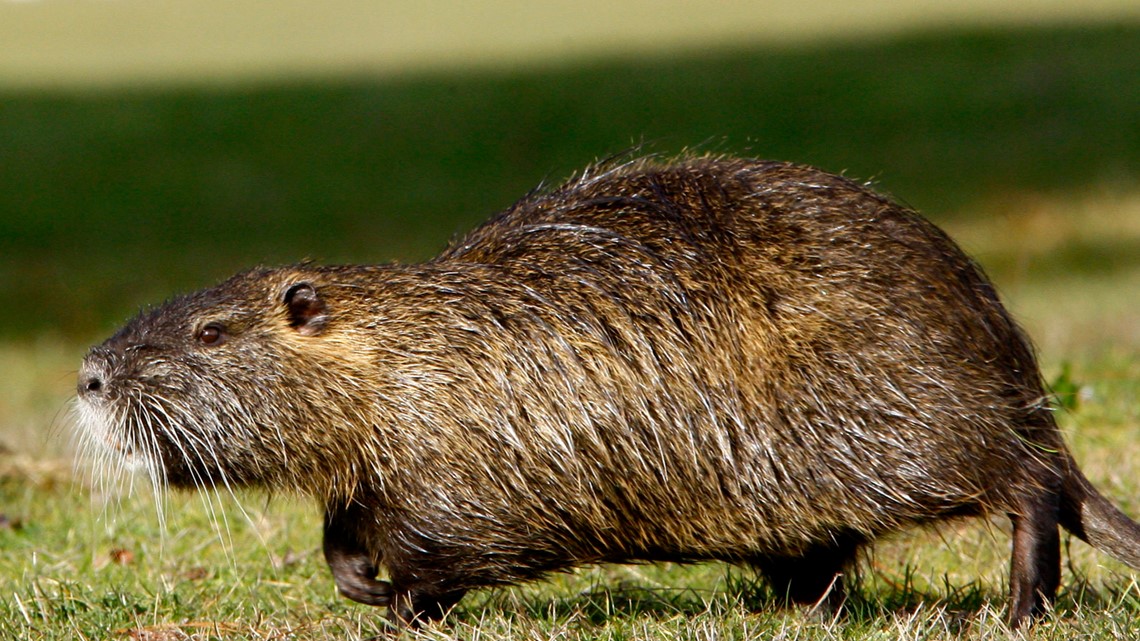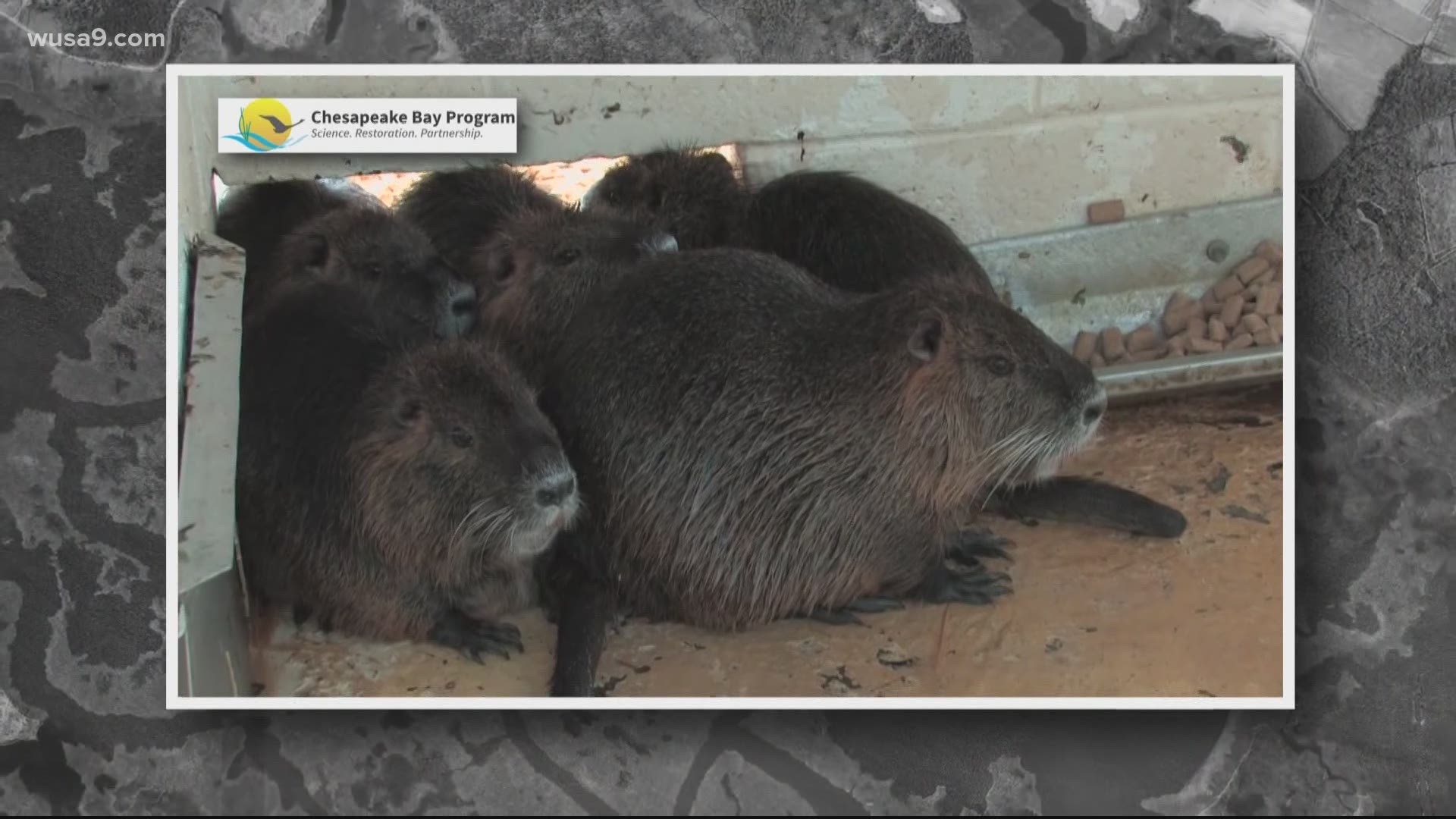WASHINGTON — Nutria, a huge furry rat-looking rodent that is invasive to the DMV and Chesapeake Bay region, could be gaining further access to Virginia wetlands, which may put the creature closer to the waters of the Potomac River, according to The Virginian-Pilot in a report released Sunday.
The news outlet in the Hampton Roads region reported that nutria have possibly spread further in that area of Virginia, and may have done so by crossing the James River from Surry County, according to sources the publication spoke with.
Sightings have been reported from Hampton to Mathews, according to The Virginian-Pilot. Areas where nutria have reportedly not usually been seen before.
Nutria is not good for the wetland regions of the United States and has caused problems for multiple states across the country, including California and Louisiana.
The rodents previously invaded Maryland’s Chesapeake Bay after the South American mammal was introduced to the region in the 1940s.
In 2003, the problem got so bad, that then-President George W. Bush authorized $20 million to manage the eradication of the rodent. Maryland was a major recipient of this money.


While Maryland has seen a sharp decrease in the species' population, Nutria are still a huge issue for states. And funding is still allocated by the US government to combat this issue.
The Chesapeake Bay Nutria Eradication Project, ran through the US Fish & Wildlife Service, has been the leading force of taking out the species in the Delmarva Peninsula.
While Hampton Roads, Virginia, and other states are seeing greater impacts and populations of nutria, the US Fish & Wildlife Service says the Delmarva Peninsula has been mostly treated of the rodent. But stops short of saying its eradicated.
"As of 2018, all of the known nutria populations have been removed from over a quarter-million acres of the Delmarva Peninsula. Although no nutria have recently been detected, it does not mean they are absent from the landscape. The Chesapeake Bay Nutria Eradication Project is conducting systematic monitoring efforts to detect residual animals and is also coordinating with Landcare Research to analyze data to apply statistical confidence when eradication is declared," according to an update on the US Fish & Wildlife Service on its website.
One reason nutria was introduced to the United States was because of the fur trading in the 1800s and 1900s.
The Virginia-Pilot also said that North Carolina is also seeing greater impacts and population increases of nutria, too.

